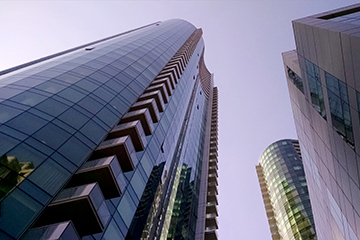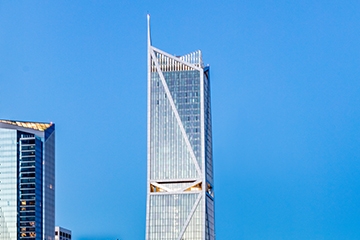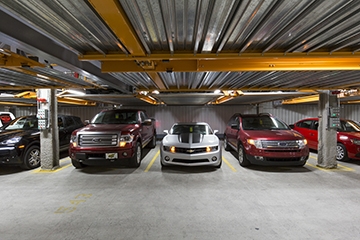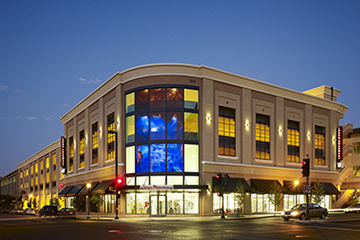Original Source: "Creating A-List Parking in Urban Settings" by Taylor Kim for The Parking Professional, September 2018
Parking is often the first and last impression a patron has when visiting a destination. In parking-challenged urban centers such as San Francisco, Calif, where parking isn’t expected to be easy, providing an A-list parking experience can add tremendous value. By integrating mobile app technology, seamless valet services, and mechanical parking for increased flexibility, parking can become an amenity rather than an inconvenient necessity.
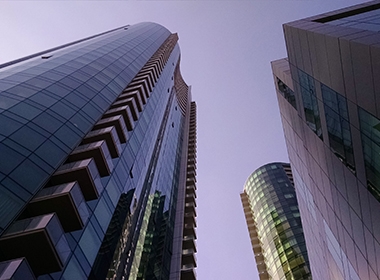 Lumina Towers, San Francisco
Lumina Towers, San Francisco
In the case of Lumina Towers, a luxury residential development in the Rincon Hill neighborhood of San Francisco, each of these technologies was used to not only improve the residential experience, but also provide a cost-effective way to provide sufficient parking within a limited footprint. Lumina consists of four high-rise towers on an entire city block. While this site is larger than most, it was still a challenge to accommodate the number of parking spaces needed to serve its 655 units. Given the amount of parking needed and the high level of service desired to serve Lumina’s clientele, it was determined that full valet parking, rather than self-parking, was the right approach.
The Specs
Parking for the development is supplied on three basement levels. The first basement consists of the valet drop-off and pick-up areas and accessible parking, as well as pedestrian connections to each of the four towers. The second and third basement levels are only accessible to valet attendants. To densify the parking to meet the project’s program, the third basement level also incorporates mechanical stackers that use volume to make more efficient use of available space.
Valet-operated mechanical parking allows for more flexible operations and increased parking capacity with minimal increases to the volume of the garage. Because the prime location means many residents don’t regularly use their vehicles, valets are able to manage demand by leveraging stackers and remote spaces in the garage for long term storage. Experienced valets also make it possible to utilize a complicated parking layout with a delicate one-way traffic pattern and parking in various angles, resulting in extremely efficient operations
Why Valet Makes Sense
Valet is often thought of as an expensive, slow, labor-intensive operation. However, with the use of technology, much of the disadvantages of valet parking have been minimized at Lumina Towers. Instead of a traditional valet operation where drivers request their vehicle once they reach the valet station in the parking garage, residents at Lumina text or call the valet desk for their car before leaving their units. The valet then queries the central system at the main valet office, where attendants can locate and retrieve the vehicle. By the time the resident reaches the garage, their car is staged and ready.
The garage drop-off was carefully designed with the driver in mind. There is adequate queuing space for residents to be able to drop off their car on arrival and proceed to their building during heavier peak periods. Attendants are also able to prepare for the morning peak demands during the slower overnight hours by staging the regular vehicles for pick up on the B1 level. Having a regular dedicated valet staff on site also forges a personal connection, increasing the level of service to the residents.
In one of the densest, busiest cities in the country, Lumina Towers not only overcame the innate challenges posed by parking, but also turned the parking experience into a luxury amenity that provides residents with a seamless, high level experience.


